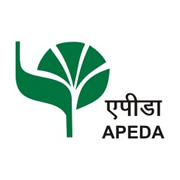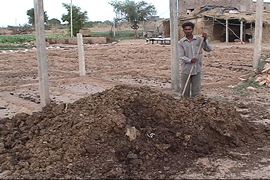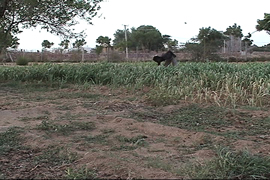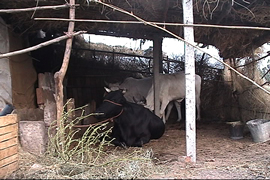The Irony of Organic Farming in India
By Brook & Gaurav Bhagat

In response to the current demand for organic foods, to the tune of a $26 billion global market, the Indian Central Government set up a National Institute of Organic Farming last October in Ghaziabad, Uttar Pradesh. The purpose of this institute is to formulate rules, regulations and certification of organic farm products in conformity with international standards.
The major organic products sold in the global markets include dried fruits and nuts, cocoa, spices, herbs, oil crops, and derived products. Non-food items include cotton, cut flowers, livestock and potted plants.
J.S. Mann, commissioner of Horticulture for the Union Agriculture Ministry, said, “The institute, set up as part of the national program for organic production, will have its offices across the country and is appointing certifying agencies for organic farm products for the domestic market.”

The certifying agencies thus far named by the Centre include the APEDA (Agricultural and Processed Food Products Export Development Authority), the Tea Board, the Spices board, the Coconut Development Board and the Directorate of Cashew and Cocoa. They will be accountable for confirming that any product sold with the new “India Organic” logo is in accordance with international criteria, and will launch major awareness and marketing campaigns, in India and abroad.
Rajnath Singh, Additional Director-General of the Indian Council of Agriculture Research (ICAR), in the LBS seminar on Organic Farming, said that currently the export of organic products is allowed only if “the produce is packed under a valid organic certification issued by a certifying agency accredited by a designated agency.”
Organic farming has been identified as a major thrust area of the 10th plan of the central government. 1 billion rupees have been allocated to the aforementioned National Institute of Organic Farming alone for the 10th five-year plan, Mann said. And by the end of 2004, according to APEDA chairman K.S. Money, 15% of farm products will be organically grown & processed. A “Working Group” has been set up by the Planning Commission, and the Department of Commerce has established National Organic Standards.
What’s all the rush? Money, of course. Statistics are predicting that the global market that was only $17 billion in the year 2000 may touch the $31 billion mark by 2005-- and India’s current share is only 0.001 per cent. In a survey called “Land Area under Organic Management (SOEL-survey), India comes in 75th place in the world, alongside Cameroon. Officially, only 0.03 per cent of its land is slated to be under Organic Agriculture-- yet, in the same survey, the number of organic farms is listed as 5660, catapulting it to 16th place in the global organic map. What does this mean? Basically, most of India’s organic farms are not officially considered (or certified as) organic.

The irony and difficulty of the new governmental push for organic agriculture is that, according to a study by Rabo India, about 65 per cent of the country’s cropped area is unirrigated and already largely “organic by default.” By this somewhat degrading term they mean that small farmers, located mostly in the Eastern and North-Eastern regions of the country, have no choice except to farm without chemical fertilizers or pesticides. Though this is true in many cases, it is also true that a significant number of them have chosen to farm organically, as their forefathers have done for thousands of years.
Many have seen for themselves the effects of chemical farming-- soil erosion and loss of soil nutrients, loss of nutrition in food, and human diseases resulting from the chemicals that inevitably seep into the water table, all the reasons for the urgent demand for organic foods and farming.
In 2002, according to Government statistics, from a total food production of over 200 million tonnes, the country produced only 14,000 tonnes of organic food products. India currently has only 1,426 certified organic farms.
This statistical discrepancy reveals that the weak link in the organic/economic chain is certification. Under current government policy, it takes four years for a farm to be certified as organic.
 The cost of preparing the report is a flat fee of Rs. 5000, and the certificate itself costs another Rs. 5000. While these costs are bearable for the new industrial organic greenhouses, they are equal to or more than an entire year’s income for the average small farmer, if the costs of travel and inspection are included.
The cost of preparing the report is a flat fee of Rs. 5000, and the certificate itself costs another Rs. 5000. While these costs are bearable for the new industrial organic greenhouses, they are equal to or more than an entire year’s income for the average small farmer, if the costs of travel and inspection are included.
In the United States, an organic farm plan or organic handling plan must be submitted to a USDA-accredited private or state certification program. The plan must explain all current growing and handling methods, and any materials that will be used-- in the present, and any future plans must be included as well. Records for the last five years must be presented. Land must be chemical-free for three years prior to harvest, so a conventional farmer cannot receive the organic label for the transitional years. This will generally mean a decrease in income-- crops may be less plentiful than with conventional fertilizers and pesticides, and yet the higher price for organic products won’t yet be possible. Many farmers cannot afford the transition, even if they want to.
One solution to the small farmer’s dilemma of how to both certify and survive is that of community certification. At the World Organic Congress, hosted last year by IFOAM (International Forum for Organic Agricultural Movements) in Victoria, Canada, the theme was “Cultivating Communities.” The idea of community certification of organic farms was the main topic of discussion, a concept increasingly popular among farming communities worldwide who have become fed up with accreditation agencies.
In community certification, communities, on a non-profit basis, take charge of the certification process themselves. They evaluate the farmer’s commitment to the stewardship of the soil, and examine from many angles whether the food is being grown in an environmentally sensitive way or not, rather than technical standards.
While community certification may be a viable solution on the local level, it is our opinion that, in the global marketplace, less than exact technical standards will never be enough for today’s consumer-- and, in today’s largely poisoned environment, it shouldn’t be, either. Furthermore, such “soft” guidelines can easily backfire on the farmers themselves, as a system not based on facts must be by definition subject to local politics, bribery, favoritism, etc.
India must find a way to keep the strict international organic standards intact if it wants to compete in the international market for organic foods-- but is there a way to do it without leaving small farmers out in the cold? One obvious solution is for the government so eager to make India organic to subsidize these certification fees enough to make it a viable option for ordinary farmers, not just for neo-organic factory farms and greenhouses.
 Banks also could provide a more level playing field for small farmers-- currently, almost all bank loans are for pure crop farmers, that is, monoculturalists. While many of these big-business farmers use harmful chemicals and processes, small farmers fertilizing their soil with recycled organic wastes are usually ineligible for insurance, much less state subsidies.
Banks also could provide a more level playing field for small farmers-- currently, almost all bank loans are for pure crop farmers, that is, monoculturalists. While many of these big-business farmers use harmful chemicals and processes, small farmers fertilizing their soil with recycled organic wastes are usually ineligible for insurance, much less state subsidies.
In the Hindu newspaper's annual environmental report, P.V. Satheesh, Director of the Deccan Development Society, writes, "It's a sobering thought that the farmers producing the best and cleanest food must pay extra to certify, instead of inorganic foods being certified as potentially bad for our health."
Did you like the article? Subscribe here to our New Article Email Alert or RSS feeds.
Sharing is caring! Don't forget to share the love, and keep the conversation going by leaving a comment below:
Advertisement
